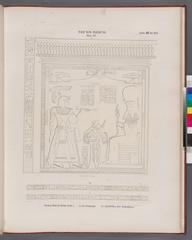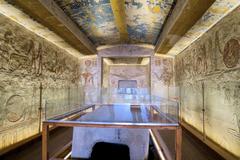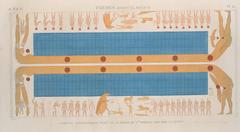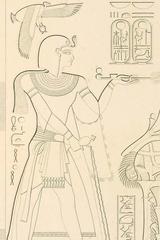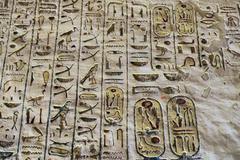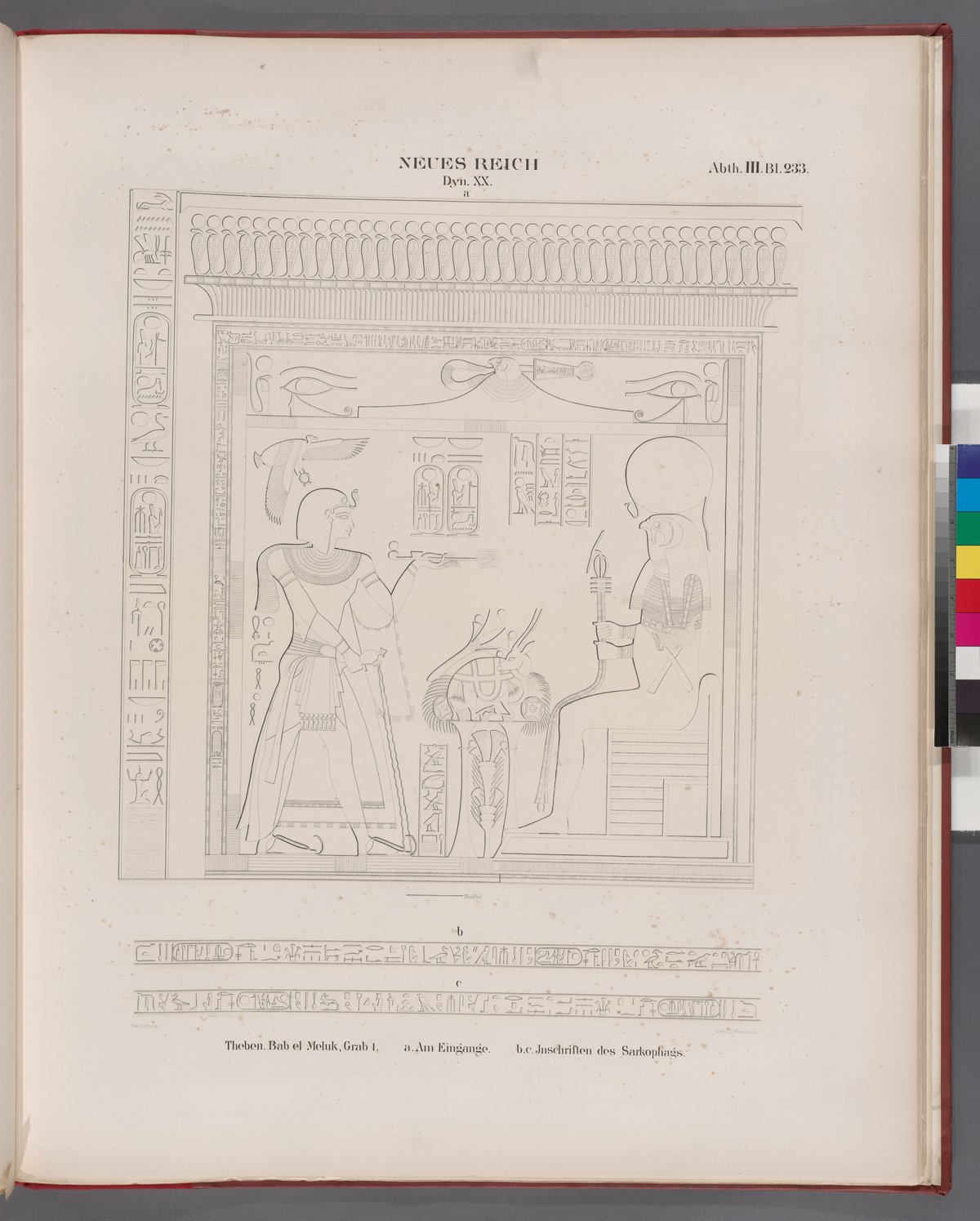
KV1 Luxor Egypt Visiting Hours, Tickets, and Historical Significance Guide
Date: 14/06/2025
Introduction to KV1 in Luxor: Historical and Cultural Importance
Situated in the legendary Valley of the Kings near Luxor, Egypt, KV1 is the tomb of Pharaoh Ramesses VII, a ruler from the final phase of Egypt’s New Kingdom. Despite its modest size, KV1 offers a compelling window into the artistry, funerary traditions, and political realities of the late Twentieth Dynasty (circa 1136–1129 BCE). This tomb is especially notable for its well-preserved wall paintings and unique features that reflect both the challenges of Ramesses VII’s brief reign and the enduring legacy of ancient Egyptian royal burial practices.
Inside KV1, visitors can explore vivid depictions of sacred funerary texts—such as the Book of Gates, Book of Caverns, and Book of the Earth—which narrate the pharaoh’s journey through the underworld and his quest for rebirth. The tomb’s straight-axis layout and the rare inclusion of canopic jar niches carved directly into the burial pit are architectural responses to the hurried completion due to Ramesses VII’s sudden death.
Access to KV1 is included in the general Valley of the Kings ticket, and the site is usually open daily from early morning to late afternoon, subject to seasonal and conservation-related adjustments. Visitors should check updated schedules and be mindful of preservation rules, including restrictions on photography and physical contact with wall art.
The broader Luxor area offers a wealth of archaeological and cultural experiences, including monumental temples, nearby royal tombs, and ongoing discoveries that continue to enrich our understanding of ancient Egypt. This guide combines practical visitor information, historical background, and the latest updates to help travelers make the most of their visit to KV1 and its surroundings. For further details on tickets and guided tours, refer to resources like Explore Luxor, Lonely Planet, and the Egyptian Ministry of Tourism and Antiquities.
Table of Contents
- Introduction: Discover KV1, the Tomb of Ramesses VII
- Visitor Information: Hours, Tickets, and Accessibility
- Navigating KV1: Layout and Features
- Historical and Archaeological Background
- Artistic Decoration and Iconography
- Looting, Reuse, and Preservation
- Recent Discoveries and Ongoing Research in Luxor
- Nearby Attractions and Visitor Tips
- FAQs
- Summary and Final Thoughts
- References and Further Reading
Discover KV1, the Tomb of Ramesses VII
KV1 marks the final resting place of Ramesses VII, offering a glimpse into the close of Egypt’s New Kingdom. This tomb, while less grand than some of its predecessors, draws visitors with its well-preserved art, unique architectural adaptations, and its position as the first tomb encountered upon entering the valley. Whether you are a history enthusiast or a first-time traveler, KV1 provides an accessible and enriching experience in the heart of ancient Egypt.
Visitor Information: Hours, Tickets, and Accessibility
Opening Hours and Ticketing
- Hours: Typically open daily from 6:00–6:30 AM until 5:00 PM, with occasional adjustments for conservation or seasonal changes.
- Tickets: Entry to KV1 is included in the standard Valley of the Kings ticket, costing approximately 750 EGP for adults (three tombs of your choice), with discounts for international students. Purchase tickets at the entrance or online through official channels (roytellstales.com).
- Additional Fees: Photography with cameras requires a separate ticket; mobile phone photography is generally permitted without flash. An electric buggy is available for a small fee to transport visitors from the ticket office to tomb entrances.
Accessibility and Visitor Tips
- Mobility: KV1 is more accessible than many tombs, with a relatively flat approach, but the interior has uneven floors and narrow passages.
- Best Time to Visit: Early morning is recommended to avoid crowds and heat.
- Dress and Preparation: Wear light clothing, a hat, sturdy shoes, and bring water.
- Guided Visits: Official guides are not allowed inside the tomb; they provide explanations at the entrance before visitors explore independently.
Navigating KV1: Layout and Features
KV1 measures about 44 meters in length and follows a straight-axis design typical of late New Kingdom royal tombs (hurghadalovers.com). The plan consists of:
- Entrance and Corridor: Gently sloping, leading to the main burial chamber. The walls are richly decorated with funerary texts and religious scenes.
- Burial Chamber: Expanded from an original corridor, it contains a rock-cut pit for the sarcophagus. Unique canopic jar niches are carved into the pit, a feature not seen elsewhere in the valley.
- Unfinished Chamber: Beyond the burial chamber, an incomplete third room remains unadorned, illustrating the abrupt halt in construction after the pharaoh’s death.
Artistic Highlights
- Ceiling: Features double images of the sky goddess Nut and the cartouches of Ramesses VII.
- Wall Decorations: Vivid scenes from the Book of Gates, Book of Caverns, and Book of the Earth, alongside images of major deities such as Osiris, Horus, and Anubis.
- Artifacts: Finds include wooden shabti figurines, pottery, decorated cups, and a granite coffin. The mummy of Ramesses VII has not been recovered.
Historical and Archaeological Background
Ramesses VII ruled during a period marked by instability and decline. Construction of KV1 reflects these conditions—its modest scale and unfinished state contrast with earlier, more elaborate royal tombs (Explore Luxor; Wikipedia). KV1’s location near the valley entrance gave it a prominent role in both ancient and modern times.
The tomb has been accessible since antiquity, as evidenced by over 130 pieces of Greek and Roman graffiti on the walls (Madain Project). Later, Coptic monks used the tomb as a dwelling. Systematic excavation and conservation began in the 1980s, revealing artifacts and ostraca that shed light on burial practices and artistic processes.
Artistic Decoration and Iconography
KV1’s decorative program is a testament to the religious beliefs of the late New Kingdom:
- Passageway: Illustrates the Book of Gates, Book of Caverns, and Book of the Earth, guiding the pharaoh through the afterlife.
- Burial Chamber: Scenes from the Book of the Earth dominate, with the ceiling adorned by Nut, symbolizing rebirth.
- Color and Technique: The tomb’s paintings use vibrant mineral pigments and are primarily executed on plaster, reflecting both tradition and the necessity for rapid completion.
Looting, Reuse, and Preservation
Like most royal tombs, KV1 was looted in antiquity. Some funerary items inscribed with Ramesses VII’s name were found in the royal cache at Deir el-Bahri, but his mummy remains missing (Wikipedia). Ancient and more recent graffiti attest to the tomb’s long history of reuse.
Conservation efforts—particularly in the late 20th century—have focused on cleaning, stabilizing the walls, and managing visitor impact. While these interventions help preserve the tomb, they have occasionally led to the loss of secondary historical evidence, such as ancient inscriptions (Wikipedia).
Recent Discoveries and Ongoing Research in Luxor
Luxor continues to be a hub of archaeological activity, with recent discoveries enhancing the visitor experience:
- New Tombs at Dra Abu el-Naga: Elite officials’ tombs dating to the New Kingdom have been unearthed, revealing funerary goods and inscriptions (archaeologymag.com).
- Burial Shafts at Deir el-Bahri: Ancient rock-cut tombs, sealed coffins, and rare artifacts have been discovered, deepening our understanding of Egyptian funerary culture (Times of Israel).
- Restoration Projects: The opening of the Southern Chapels and other initiatives are expanding access to previously restricted sites (Khentiamentiu).
- Industrial Complexes at Karnak: Recent finds include bronze workshops and breweries, highlighting Luxor’s ancient economic activity (Greek Reporter).
To protect fragile sites, tomb openings are rotated, and plans are underway for a replica Valley of the Kings to balance access and preservation (Flashpacking Family).
Nearby Attractions and Visitor Tips
- Other Tombs: KV2 (Ramesses IV), KV9 (Ramesses V/VI), and the Tomb of Seti I.
- Temples: Karnak and Luxor Temples, Temple of Hatshepsut, Colossi of Memnon.
- Museums: Luxor Museum, Mummification Museum.
- Facilities: Restrooms and a visitor center are near the Valley entrance; shops and food are available outside the archaeological zone.
- Transportation: Electric buggies are available for a small fee; many visitors cross the Nile by ferry or felucca before continuing by taxi or tour bus.
Frequently Asked Questions (FAQ)
Q: What are the visiting hours for KV1?
A: Usually from 6:00/6:30 AM to 5:00 PM, but always check current hours before your visit.
Q: Is KV1 included in the standard Valley of the Kings ticket?
A: Yes, it is generally included without an extra charge.
Q: Is KV1 wheelchair accessible?
A: The approach is relatively flat, but the tomb interior has uneven surfaces and steps.
Q: Can I take photos inside KV1?
A: Photography with cameras requires a separate ticket; mobile phone photography may be allowed without flash. Check on-site policies.
Q: Are guides allowed inside KV1?
A: No, guides provide information outside the tomb.
Q: How long should I plan to spend in KV1?
A: Allocate about 15–30 minutes for a standard visit.
Summary and Final Thoughts
KV1, the tomb of Ramesses VII, is a testament to the complexity and resilience of ancient Egyptian culture at the close of the New Kingdom. Its art, architecture, and long history of use and rediscovery offer visitors a uniquely intimate encounter with the ancient world. By observing site rules and supporting ongoing preservation, travelers help ensure that this remarkable heritage endures for future generations.
Luxor’s archaeological landscape is continually evolving, with new discoveries and restoration efforts enhancing the visitor experience. For up-to-date information, use trusted resources such as the Egyptian Ministry of Tourism and Antiquities, or download the Audiala app for guided tours and interactive maps.
Plan your visit thoughtfully, respect the site’s cultural and historical significance, and immerse yourself in the extraordinary story of KV1 and the Valley of the Kings.
